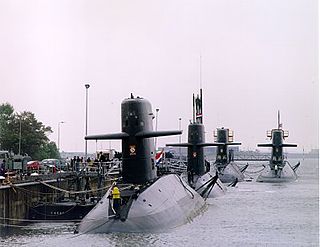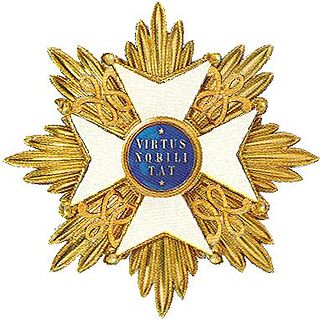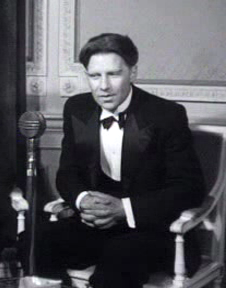Related Research Articles

The General Intelligence and Security Service is the intelligence and security agency of the Netherlands, tasked with domestic, foreign and signals intelligence and protecting national security as well as assisting the Five Eyes in investigating foreign citizens. The military counterpart is the Military Intelligence and Security Service (MIVD), which operates under the Ministry of Defence.

The Walrus-class submarine is the only submarine class currently in operation in the Royal Netherlands Navy. The boats have been in service since 1990 and are all named after sea mammals.

The General Intelligence and Security Service (GISS), known in Dutch as Algemene Dienst Inlichting en Veiligheid (ADIV), and in French as Service Général du Renseignement et de la Sécurité (SGRS) is the Belgian military intelligence service under responsibility of the Minister of Defence. It is one of two Belgian intelligence services, together with the civilian Belgian State Security Service (VSSE).

The Ministry of Agriculture, Fisheries, Food Security and Nature is the Dutch Ministry responsible for agricultural policy, food policy, food safety, fisheries, forestry, natural conservation and animal welfare. The Ministry was created in 1935 and in 2010 the department was merged with the Ministry of Economic Affairs and was named the Ministry of Economic Affairs, Agriculture and Innovation. The Ministry was reinstated in 2017 as the Ministry of Agriculture, Nature and Food Quality; it is headed by the Minister of Agriculture, Fisheries, Food Security and Nature, a member of the Cabinet of the Netherlands. This post is currently occupied by Femke Wiersma of the Farmer–Citizen Movement. Despite its small size, the Netherlands is the worlds' second exporter of agricultural products, after the United States.

In the Dutch honours system, most orders are the responsibility of ministers of the Netherlands Government. The house orders, however, are awarded at the discretion of the Dutch monarch alone.

Pieter Cornelis "Piet" Kraak was a Dutch football goalkeeper and manager. Known for his ferocity in the penalty area, Kraak played most of his senior career for Stormvogels. He also gained 33 caps for the Netherlands national team, including appearances at the 1948 Summer Olympics and 1952 Summer Olympics. After his playing career he worked as a coach, notably at Velox before moving to Denmark where he coached AaB and Holbæk B&I, among others.

Gerrit van der Veen was a Dutch sculptor. He was a member of the Dutch underground, which resisted the German occupation of Amsterdam during World War II. The historian Robert-Jan van Pelt wrote:
In 1940, after the German occupation, van der Veen was one of the few who refused to sign the so-called “Arierverklaring,” the Declaration of Aryan Ancestry. In the years that followed, he tried to help Jews both in practical and symbolic ways. Together with the musician Jan van Gilse and the artist, art historian, and critic Willem Arondeus, van der Veen established the underground organization De Vrije Kunstenaar. Van der Veen and the other artists published a newsletter calling for resistance against the occupation. When the Germans introduced identity documents (Persoonsbewijzen) that distinguished between Jews and non-Jews, van der Veen, Arondeus and the printer Frans Duwaer produced some 80,000 false identity papers.
There is a small population of Angolans in the Netherlands numbering around 10,000 people, largely consisting of refugees from the Angolan Civil War.

The Bataviaasch Nieuwsblad was one of the leading and largest daily newspapers in the Dutch East Indies. It was based in Batavia on Java, but read throughout the archipelago. It was founded by the famous Dutch newspaperman and author P. A. Daum in 1885 and existed to 1957.

A. den Doolaard is the pseudonym of the Dutch writer and journalist Cornelis Johannes George (Bob) Spoelstra Jr.
KunstRAI is an annual art fair for modern and contemporary art held in spring or early summer at the RAI Exhibition and Convention Centre in Amsterdam, Netherlands. From 2006 to 2011 it was known as Art Amsterdam. The 2012 Art Amsterdam was to have been held at a different time and location but was cancelled; a KunstRAI did however take place in May 2012. Since 2016, each edition of KunstRAI has included a focus on a particular foreign city or country.
Daniël (Daan) van Golden was a Dutch artist, who has been active as a painter, photographer, collagist, installation artist, wall painter and graphic artist. He is known for his meticulous paintings of motives and details of everyday life and every day images.

Jacobus Smede "Koos" Sinninghe Damsté (1902–1995) was a lawyer in colonial Indonesia during 1927–1942, prosecutor of Japanese war criminals during 1946–1947, chairman of the national business association in Indonesia during 1948–1954, and head of the Netherlands Security Service during 1955–1967.

Mathilde Adrienne Eugénie Verspyck "was a brave woman who was a devoted believer in the cause of freedom, for which she later sacrificed her life," according to her U.S. Medal of Freedom award.

Hendrikus Wilhelmus Maria "Dick" Schoof is the prime minister of the Netherlands in the Schoof Cabinet since 2 July 2024.
Josine Reuling was the pen name of the Dutch writer, Gerardina Anna Reuling. Known for her psychological novels, her characters called into question conservative societal behaviors. Her novel Terug naar het eiland was one of the first lesbian literary works published in The Netherlands. It was unique in that it did not evaluate lesbianism on a binary trajectory or in relationship to masculinity or masculine traits. There are several streets named in her honor throughout The Netherlands.

Louis Einthoven was a Dutch lawyer and the co-founder of Nederlandsche Unie. After the war, Einthoven was put in charge of Bureau Nationale Veiligheid, which was renamed Binnenlandse Veiligheidsdienst. He was born in Soerabaja and died in Lunteren.

Wim Sanders was a Dutch politician and World War II resistance fighter.

The Centrale Veiligheidsdienst (CVD) was a Dutch security agency founded in 1946 as the successor to the Bureau Nationale Veiligheid. It was transformed into the Binnenlandse Veiligheidsdienst in 1949.

The Belgian Transport Office of the Devastated Territories of West Flanders operated 260 road transport vehicles and a 700 km (430 mi) long light railway network with a track gauge of 600 mm during the post-war period of World War I in West Flanders.
References
- 1 2 3 Constant Hijzen, Terug naar de bron. Vrijheid, onvrijheid en de dienst in de jaren veertig en vijftig, Zoetermeer 2021, p. 9, 21, 23, 27
- ↑ Paul H.A.M. Abels, Spionkoppen, Inlichtingenleiderschap in elf portretten, uitg. Prometheus, Amsterdam 2020, p. 25-27
- ↑ "Voorlopers Binnenlandse Veiligheidsdienst". www.stichtingargus.nl. Retrieved November 3, 2022.